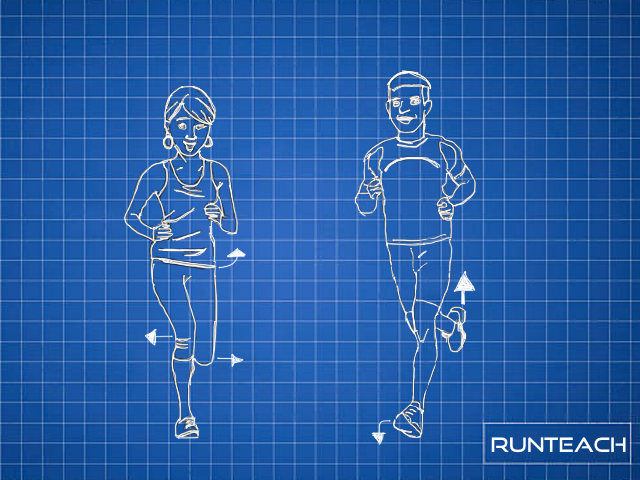Midsection Part 2
This post relates to my Blueprint for running, which is free to download here – from my other site, The Confident Runner.
In the last email we looked at the rotation of your shoulders and upper back (thoracic spine). You learned that your brain will use a huge amount of energy performing corrective actions if you are excessively over-rotating when you run.
And that continues as we look at other aspects of your midsection. If you remember from the last lesson, I took you on a mini journey of running behind someone and then overtaking them. If you recall the story, as you overtake them you glance across and notice they are bent over slightly at the waist.
This is so common in runners, it’s almost normal. But that doesn’t mean it’s efficient or the most appropriate way to run. In fact, bending at the waist is both a compensation and a cause of other compensations – basically, it’s not a great thing to be doing.
So why do so many runners run like this?
There are a few reasons, so let’s look at them now:
- You have been told that a forward lean is good running form
- You don’t have the appropriate activation and integration to stop it
- You are constantly correcting and shifting your centre of gravity/mass to stop you face planting!
(By the way, we are referring to the Flexion/Extension box in the Mid Section part of the self-assessment sheet.)
So let’s have a brief look at the three possible reasons why this bend at the waist (flexion) happens…
Forward lean
I’ve noticed that this is massively misinterpreted. A very small degree of forward lean (about 7 degrees) can improve efficiency, but you lean from your ankles NOT your waist.
It is more efficient to run in an upright position than it is to have a forward bend from the waist.
Lacking activation and integration
I class your core as being from your neck down to your gluteus maximus (essentially the top of your things). This is probably a much larger area that you may think of as your core. However, all of this area needs to activate and integrate to form stability and harness the power of rotation you learned about in the last lesson.
If you are not able to activate the muscles in your core, and integrate them in a coordinated manner, one of the results can be a forward bend from the waist. This becomes even more pronounced when you start to get tired, because instead of using the high-endurance postural muscles, you are using muscles with far less endurance.
Start noticing both how you run when you start to get tired, and also look at other runners. Start to notice the varying degrees of forward bend.
Constant correction of mass
As you bend forward, you shift your upper body weight forward. Try it for yourself. Stand up and bend forward a little at your waist. Now take a step forward – carefully!
It’s a lot harder than if you stand upright and take a step forward, and this is exactly the same when you are running.
When I see runners overstriding, the very first thing I look at is their upper body position. Many coaches, articles and videos will try and get you to correct your foot placement so you don’t land with your foot so far out in front of you – and they are right.
But, you stand very little chance of being able to achieve this if you bend forward at your waist. Why?
You would fall flat on your face!
At best, you would be a series of stumbles. And I know, it is often said that running is controlled falling, but the key in that phrase is controlled!
And actually, I’m not sure I entirely agree with that viewpoint. I prefer to think of running as an integrated, coordinated set of movements. Falling, controlled or not, doesn’t sound very nice.
Anyway, the overstriding and constant correction of mass is yet another energy leak. If your brain has to adjust the position of your hips, legs and feet with every step, it’s going to consume a lot of energy.
Start to notice how other runners land on their feet. What is their foot position? Are their feet landing way out in front? Are their feet landing on or even across the midline?
Do the same with your own running – note whether you bend at the waist or not.
If you lean back, that’s the extension, and we’ll look at that next time.
And yes, I am spending a bit of time in this Midsection area, and that’s because it is absolutely critical to efficient and enjoyable running – especially as we get older.
So, you have your task for this week – observe and become aware of upper body position and how it influences foot placement.
Unleash your hips is my online course designed to help you get those flying feet through better hip and pelvis mobility and improved running technique. Click Here to find out more.


